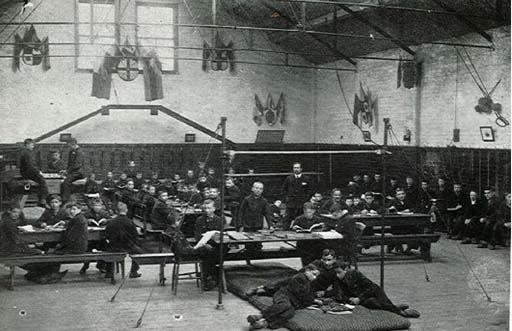2 The persistence of prison education
Despite the new focus on punishment in prisons, schools for prisoners persisted. The provision of education was included in the new rules for local prisons laid out in the 1865 Prison Act. The Convict Prison Directors issued new Standing Orders on education in convict prisons – some of which you will learn about shortly – signalling their commitment to some degree of provision. Given the significant disillusionment with reformatory projects in prisons, where did this commitment to education come from?
Although there was significant appetite among policymakers to punish, it should be remembered that they did not (or could not) entirely abandon the reformatory aim of imprisonment. As historian Lawrence Goldman has explained, the reformation of offenders was expedient, as a penal system that reformed prisoners was cheaper than one that did not because it tackled reoffending (Goldman, 2002, p. 147). Prisons, in a democratic society and funded by taxation, need to maintain public support. The continuation of education, as well as the curtailed religious facilities, showed that something was being done to ensure that prisoners did not leave prison worse than when they came in.
For another equally, if not more plausible explanation for the persistence of education in prisons, we need to look outside the penal world. In Session 1 you learned that the desire for a national system of schooling in England – and the failure to establish one – played a key role in the initial establishment of schools in prisons during the 1810s and 1820s.

Between c.1850 and 1862, educational reform was once again on the government’s agenda. During the 1850s, a consensus emerged among policymakers that some degree of national education provision was needed for England and Wales. Several attempts were made to legislate for universal elementary schooling. In 1853, a new grant was introduced for inspected schools based on the number of children in attendance.
Between 1854 and 1857, the government took responsibility for the education of criminal and potentially criminal children through the establishment of reformatory and industrial schools. In 1858, a Royal Commission was convened to consider the question of national provision. The Revised Code of 1862, which made grants to inspected schools dependent on the regular attendance of pupils and their performance in examinations in reading, writing and arithmetic, was intended both to reduce costs and to encourage more working-class parents – who were primarily interested in basic skills teaching – to send their children to school.
These developments, especially in the absence of a national system of schooling, ensured the survival of schools in prisons. Educational policy, as you will see in this and the next session, continued to have some impact on provision in prisons, as penal policymakers and officials attempted to mirror the teaching that was on offer in state-subsidised elementary schools. Penal policy, however, continued to shape the delivery of education.
